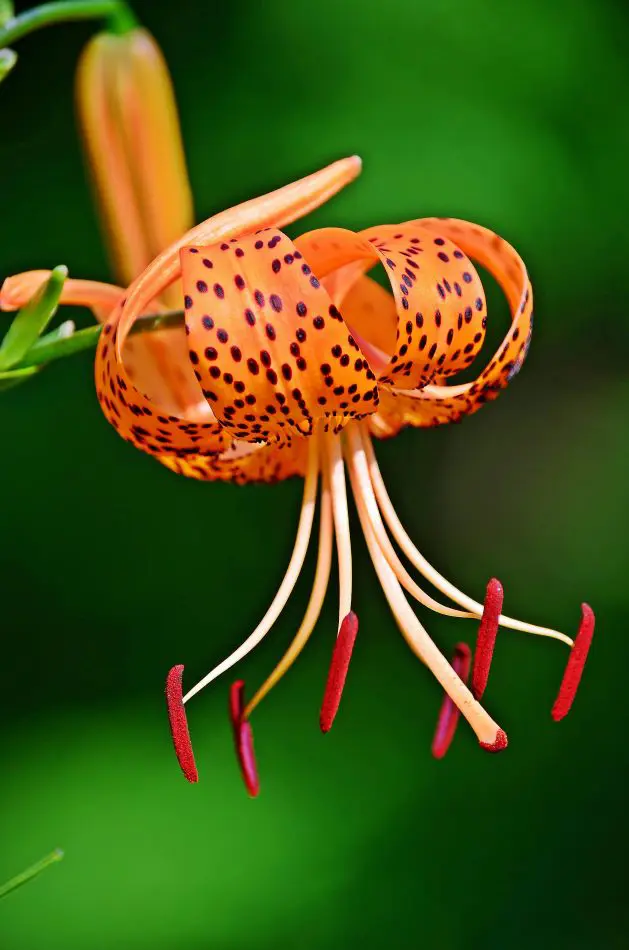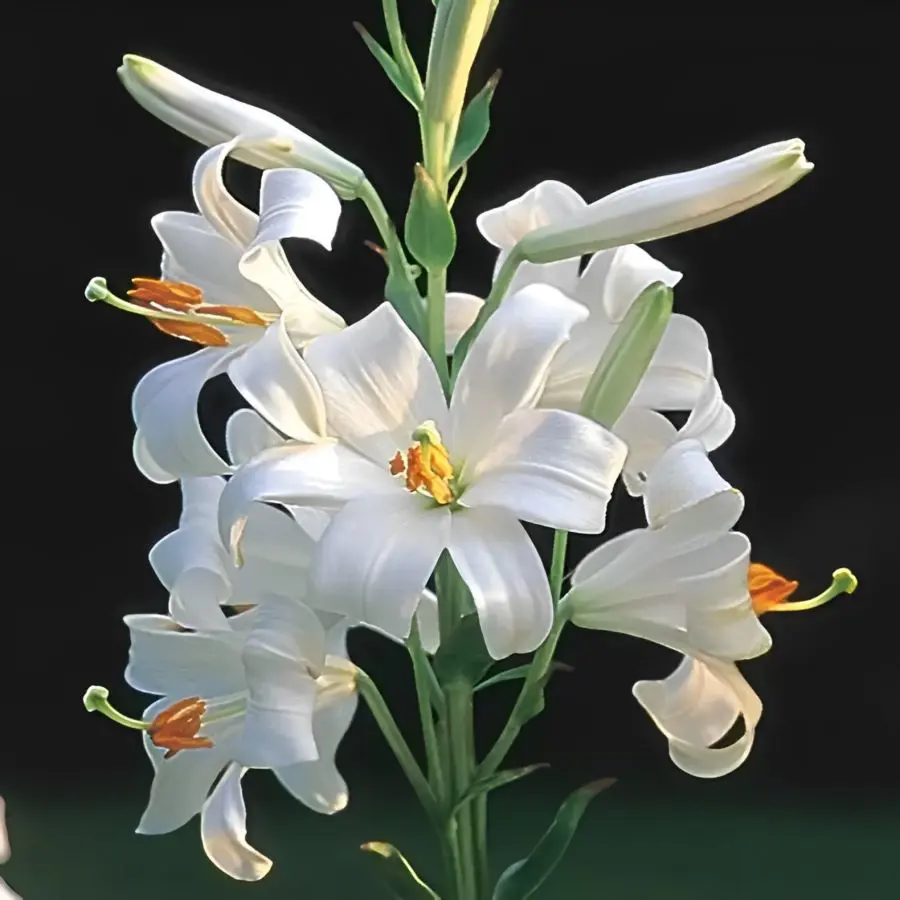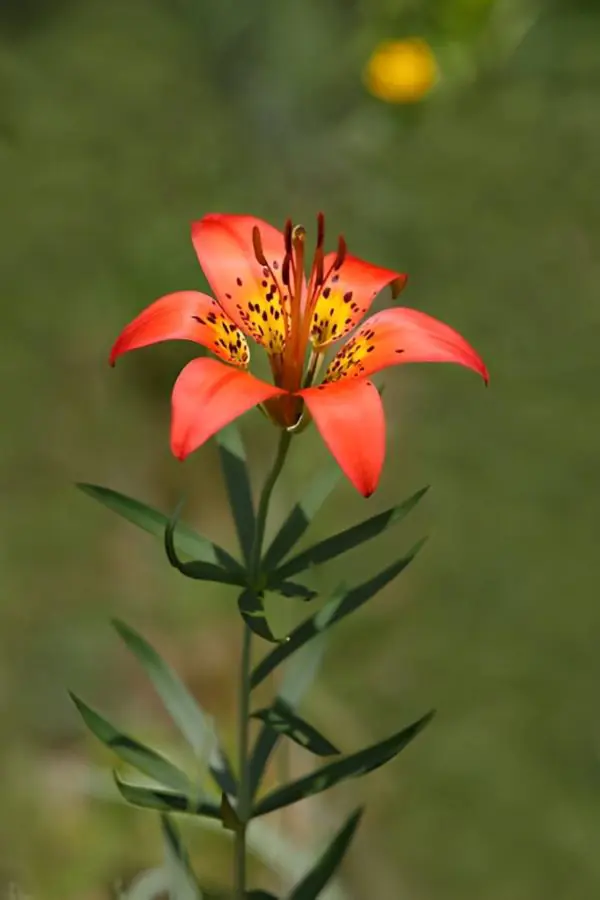1. Oriental Lilies
Oriental lilies are a stunning group of lily varieties known for their large, fragrant flowers that bloom in late summer. They are larger and more fragrant than their Asiatic counterparts and flourish in cooler climates. They are relatively easy to grow, but it is necessary to consider the following two things:
How to Grow?
They are relatively easy to grow, but it is necessary to consider the following things:
- They need at least six to eight hours of direct sunlight to bloom well.
- Plant them 4 to 6 inches deep with the pointed part facing upwards in spring or fall.
- Water the bulbs generously after planting and keep the soil moist but not soggy during the growing season. Fertilize once annually in spring with a slow-release fertilizer.
- Mulch over the area with 4-6 inches of organic bark mulch in fall and remove it in spring as the bulbs begin to sprout. Divide the bulbs every 3-4 years to maintain plant health and promote blooming.
- Choose blooms that are almost open and trim the stem at an angle. Remove any leaves below the waterline to prevent staining.











